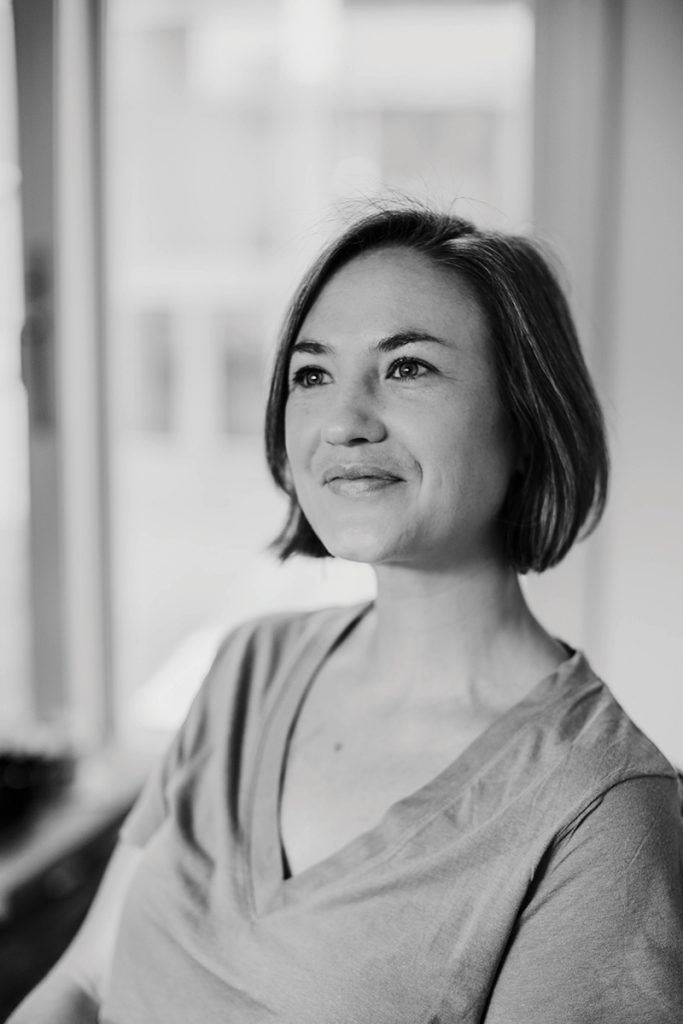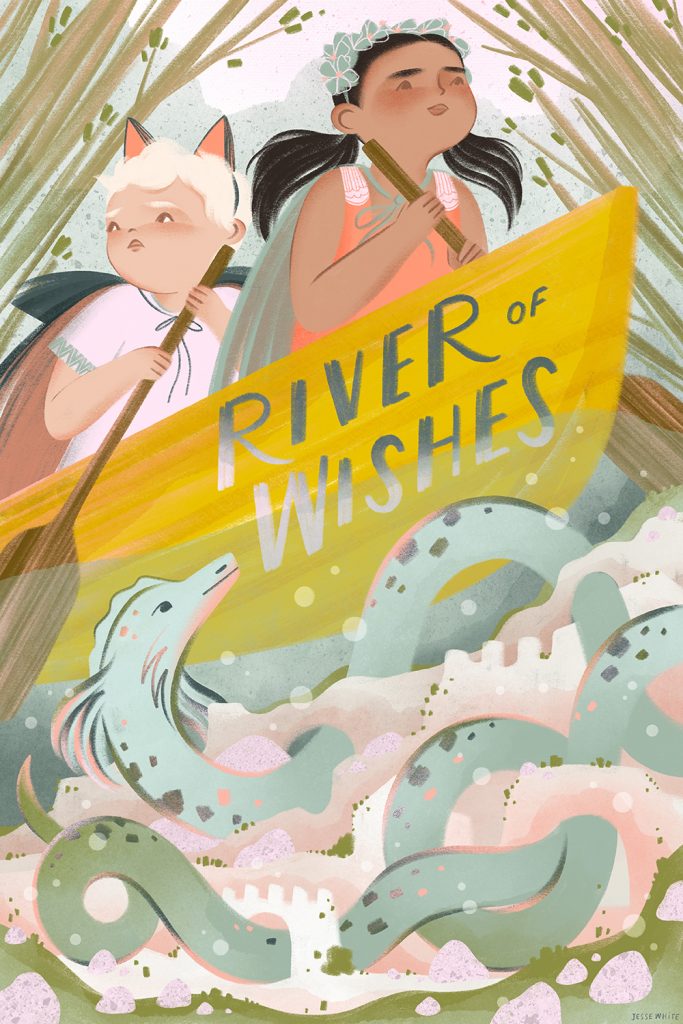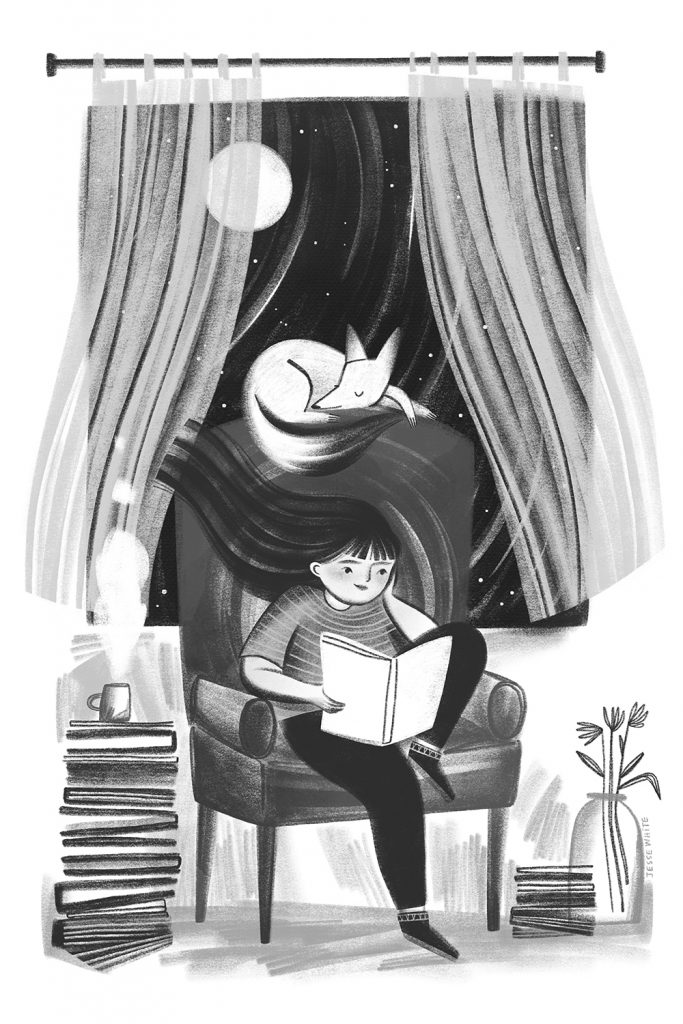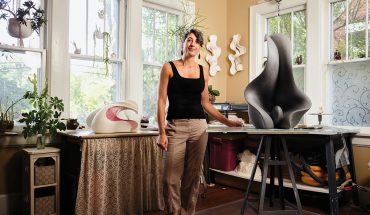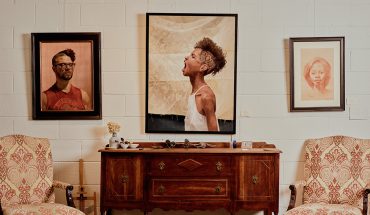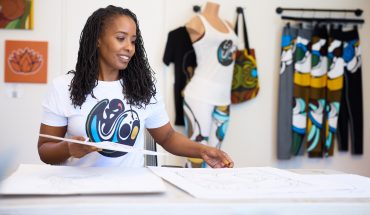This Durham artist and illustrator draws inspiration from her former students and the adventures of her youth.
by Wiley Cash | photography by Mallory Cash
When Jesse White worked as an elementary school art teacher, she felt that her students’ personalities and identities weren’t reflected in the teaching materials she was provided. So she took matters into her own hands, literally, by drawing all of her own classroom materials.
It was an effort to convey how much she valued each child, to make sure they were represented. And today, as a full-time illustrator, White creates empowering books for children that show smart, curious, adventurous and diverse protagonists exploring the world.
This conviction to portray the world as children see themselves in it comes from her own childhood outside Siler City, where, she grew up with her mother, Gwen Overturf, and her father, Eddie White, on 10 acres of land along the Rocky River.
“Childhood is a primary inspiration for me,” she says on a bright afternoon at her home in Durham. “I’m someone who loves nostalgia and likes thinking about ways that we can reconnect with our childhood or just the child inside of us.
And so that’s what I do all day; I go back to little Jesse, who was spending a lot of time in the woods with my mom and by myself exploring the rocks near our house, coming up with games, ideas and secret missions that I would go on.”
Jesse was home-schooled until second grade and accompanied her mother to various jobs in landscaping and at a goat dairy. She was left free to explore. “I would spend a ton of time with the dog and the goats and go wandering off into the woods,” she says.
When her mother began teaching at the former Community Independent School, an alternative elementary school in Pittsboro, Jesse followed. And then she was off to public school for middle school and high school.
“I’ve had a pretty big range of educational experiences. Looking back on it, even though there were some difficult transitions, I wouldn’t trade it for sure. I value a lot of what I picked up and learned at each of those different types of schools,” she says.
But she felt different from other kids. After years of milking goats, roaming the woods and developing elaborate games on her own, how could she not? She was more interested in the natural world than superheroes or Barbies.
“I was drawing stuff that my classmates had never really seen before,” she says. “So maybe that’s where that difference showed up.”
Jesse gained inspiration not only from the woods around her, but also from her parents, both of whom were arts-oriented. Her mother had a background in graphic design and experience in education. Although her father had a similar background, he designed and built houses for much of her childhood.
When she was in middle school he shifted away from construction and became a full-time artist, creating large-scale metal sculptures and installations, including one for the Hilton Hotel in Kuala Lumpur.
It was in college at the University of North Carolina at Chapel Hill that Jesse first considered pursuing a career in arts education.
“It was this wonderful answer to what had been missing for me,” she says. “I enjoyed making art, but I was like, Man, this is missing a social aspect somehow. What can I be doing to use this to engage people and help them reflect on their own identities and their own lives and their own learning? And so art education blew my mind in that way. I could not only make art, but I could facilitate learning through art.”
Fresh out of graduate school, the first time she stepped into her own classroom in a Washington, D.C., public elementary school, Jesse planned to present some “life-altering lessons” to her students. She quickly found that teaching 25 to 32 young kids at a time was as much about getting a class to function as it was creativity.
By her second year she had learned how to balance the practical demands of curriculum and classroom management with her creative ideas on how to engage students. “It was one of the most exciting and rewarding things that I’ve ever done,” she says.
After four years in the classroom she decided to go out on her own and pursue a full-time career as an illustrator. Once she focused on her own art, she recalled the power of creating materials that represented who her students knew themselves to be, as well as how she saw herself as a young girl who thrived in the outdoors. The results were illustration after illustration of young girls exploring natural landscapes.
“I don’t know why it took me so long to realize this,” she says, smiling, “but I just don’t draw kids inside very much.”
A quick perusal of her website or Instagram page reveals this to be true. In one illustration a little girl in a rain slicker peers over the bow of a storm-tossed ship, the tentacles of a sea monster snaking below her. In another, a girl sits comfortably atop a rock and pours a cup of tea, a blue snake encircling her neck.
Jesse’s work also reveals a lack of adult characters, something others — including the editors of her forthcoming book, Brave Like Fireweed, which she both wrote and illustrated — have brought to her attention.
“They said, We can’t have these kids just wandering by themselves out in the middle of nowhere without any adult supervision,” she says. “I totally get that.
But a huge focus and motivation for my artwork is to show kids as the capable and intelligent and independent beings that they are, and that doesn’t always require having an adult presence in order to be like that.”
People might also wonder where all the boys are. Historically, boys been over-represented in children’s books, but Jesse’s main characters are primarily young girls.
“I’ve always found it to be incredibly important to include girls in my work who are outside, playing, exploring and adventuring, just because that’s not something that they’re always allowed or encouraged to do,” she says. “It’s something that I was allowed and encouraged to do, and that became a really important part of who I am.”
Viewing Jesse’s work, it’s not hard to imagine these girls leaping from the page and striking out for places as yet undiscovered. And it’s not hard to imagine young Jesse doing the same. She still is.
This article originally appeared in the September 2023 issue of WALTER magazine.

